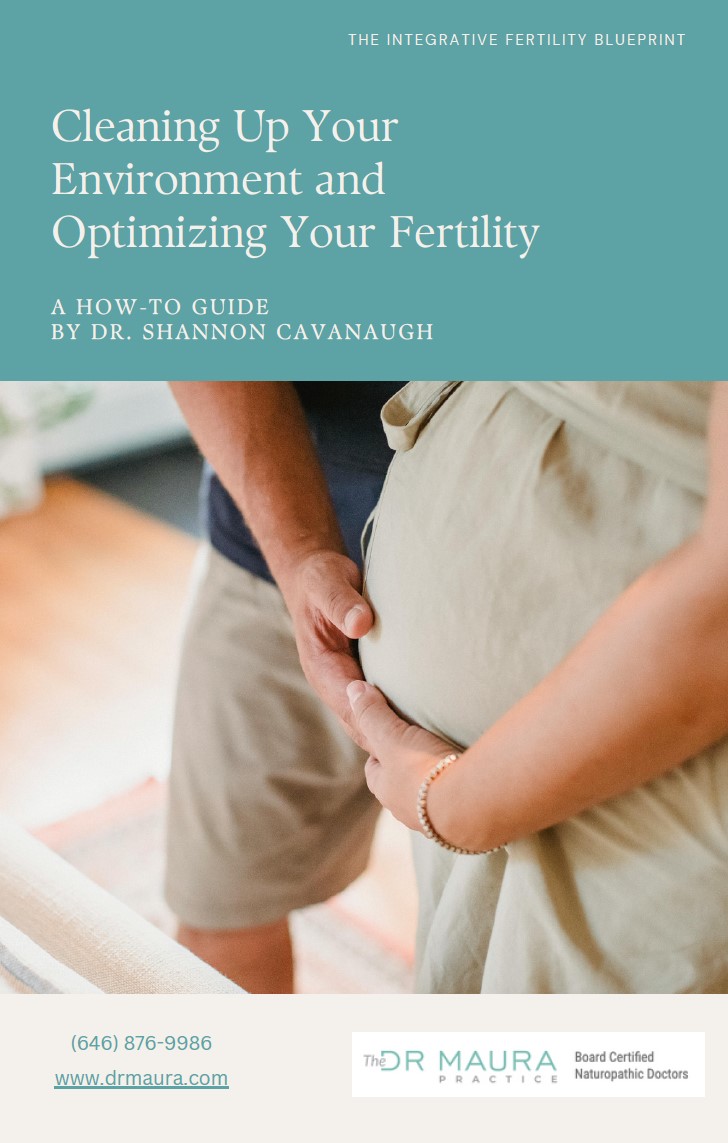(646) 760-6627
Treating the Root Cause of IBS: Small Intestine Bacterial Overgrowth
Published: April 17, 2015

This month in the Huffington Post, I write about an issue I see quite frequently in practice: IBS. Did you know that 84% of IBS patients suffer from overgrowth of bacterial in their small intestine?
 Rosie is a 30-year-old banker with very long work hours who came to see me with symptoms of gas, bloating, and constipation. She had stomach cramps after eating, stubborn acne, and a weight gain of 10 pounds in the last couple of years despite a good diet and exercising regularly. A visit to a gastroenterologist had yielded the diagnosis of irritable bowel syndrome (IBS) after testing that included an endoscopy, a colonoscopy, blood work, and an MRI, all of which were essentially normal. Rosie’s doctor prescribed Amitiza, a drug typically given for constipation, which caused her nausea and abdominal pain. She stopped taking it after a few days. Rosie expressed her frustration to me: How could everything show up normal on tests? Was this all in her head? She didn’t want to take medications that made her feel worse. She was at the end of her rope: She had stopped socializing for fear of the terrible gas pain that came when she ate out and felt depressed and isolated.
Rosie is a 30-year-old banker with very long work hours who came to see me with symptoms of gas, bloating, and constipation. She had stomach cramps after eating, stubborn acne, and a weight gain of 10 pounds in the last couple of years despite a good diet and exercising regularly. A visit to a gastroenterologist had yielded the diagnosis of irritable bowel syndrome (IBS) after testing that included an endoscopy, a colonoscopy, blood work, and an MRI, all of which were essentially normal. Rosie’s doctor prescribed Amitiza, a drug typically given for constipation, which caused her nausea and abdominal pain. She stopped taking it after a few days. Rosie expressed her frustration to me: How could everything show up normal on tests? Was this all in her head? She didn’t want to take medications that made her feel worse. She was at the end of her rope: She had stopped socializing for fear of the terrible gas pain that came when she ate out and felt depressed and isolated.
Rosie is a typical patient who ends up in my office: a hard-working urbanite with a busy social life who takes her health seriously, always reading and staying educated on the latest in nutrition and wellness. Why, then, could she not control these unmanageable digestive symptoms? Being strict with her diet helped, but only a little bit. She didn’t want to take medications, preferring to get to the root of why she was feeling this way in the first place and address the imbalance.
My suspicion was that she had small intestine bacterial overgrowth, or SIBO, which has been found to exist in 84 percent of people with IBS. Another study found that 66 percent of kids thought to have IBS actually had SIBO. Conditions from autism to acne to fibromyalgia and rheumatoid arthritis are thought to be linked to SIBO.
SIBO symptoms include:
- Gas
- Bloating
- Abdominal cramping
- Nausea
- Fatigue
- Weight gain
- Nutrient deficiencies (in particular, iron, B vitamins, and fat)
- Depression
The small intestine is full of bacteria, and that’s a good thing: We need a robust population of bacteria in both the small and large intestine to stay healthy. But when there are too many of the wrong kind of bacteria in the inappropriate place, symptoms like the above arise. Bacteria migrate to the small intestine for a variety of reasons, including:
- Antacid use
- Low digestive function
- Decreased motility from nerve damage, chronic stress or any disease that causes constipation like hypothyroidism
- Chronic antibiotic use
- Celiac disease and non-celiac gluten sensitivity
- Inflammatory bowel diseases like ulcerative colitis and Crohn’s disease
Diagnosis of SIBO is made with a breath test in which the patient drinks a sugary substance and the breath is collected and tested for certain gases typically exhaled by the bacteria the sugar feeds. If there is an excess of bacteria, methane and/or hydrogen gases will be detectable in the breath.
Once a patient finds she’s positive for SIBO, treatment can go one of two ways: antibiotic or herbal. The primary antibiotic used to treat SIBO is Rifaximin (Xifaxan), which is often the first choice for gastroenterologists. It’s mostly non-absorbable and stays in the digestive tract, so doesn’t have some of the common side effects of antibiotics, such as urinary tract infection. Herbal antibiotics are the treatment of choice in my clinic and have been found to be equal in effectiveness to Rifaximin. Constipation in SIBO needs to be treated, as well, and motility increasing drugs or herbs are often added.
Nutrition is an essential part of treatment, and several diets have proven effective for treating SIBO including the FODMAPS diet and the Elemental Diet. Each doctor will differ on how they counsel patients on nutrition, but the bottom line is reducing intake of sugars that feed bacteria and eliminating foods that impair gut function.
In the case of Rosie, I had her do a breath test, which came back positive for methane-producing bacteria in the small intestine. I also did a comprehensive stool analysis to determine if yeast and large intestine dysbiosis were compounding the problem, which they were not. We used high-dose antimicrobial herbs like garlic, berberine and neem over the course of a couple of months. To address her constipation we used lots of magnesium and motility-increasing herbal combinations. I tailored a diet for her that combined elements of the FODMAPS and SCD, which she found quite doable.
After 2.5 months of treatment, Rosie was back in my office for a follow-up. Her acne was gone, she had no more gas and bloating, had lost 12 pounds and now had the energy to go to the gym every day. After this experience, she felt more at peace and attuned to her body, deciding to leave her stressful job to pursue a career as a writer. As a naturopathic doctor who seeks to treat the whole person, not just the symptoms, that’s the best outcome I could’ve hoped for.
This article originally appeared on the Huffington Post. Click Here.

